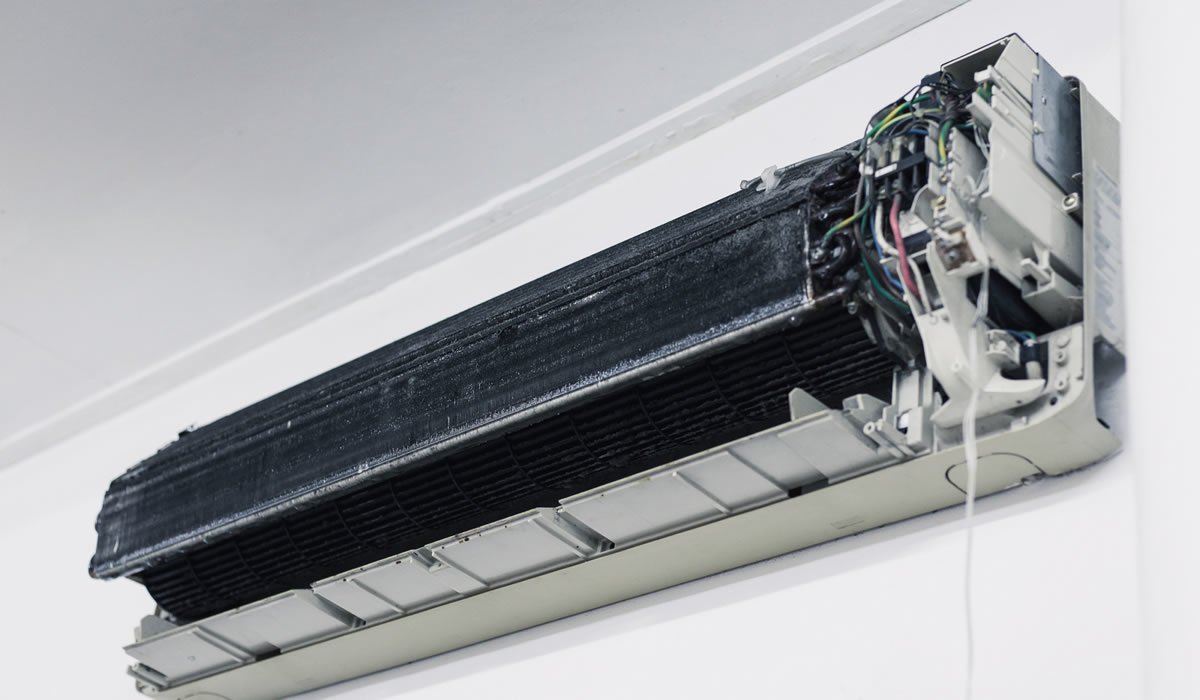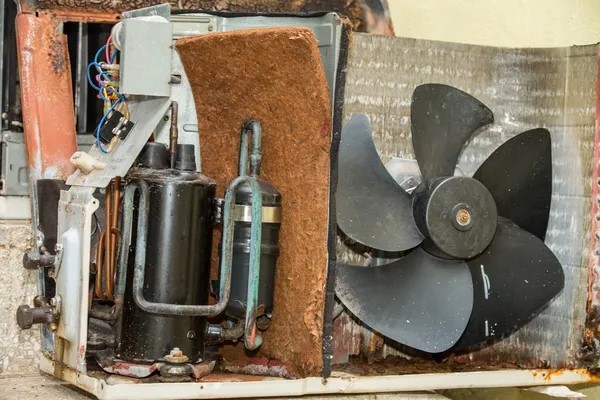
When your air conditioner breaks, it’s important to know the right parts to order so you can get it fixed as quickly as possible.
This comprehensive guide will discuss all of the different air conditioner parts and what each one does. We’ll also provide some tips on how to troubleshoot common problems and how to order replacement parts. Let’s get started!
How does the air conditioner work?
The basic principle behind air conditioning is quite simple. The refrigerant circulates through the system, absorbing heat from the air inside your home. It then travels to the compressor, where it is compressed and turned into a hot gas.
This gas passes through the condenser unit, which releases the heat outside. The refrigerant then travels back to the evaporator, where it cools down and returns to its liquid form.
From there, it travels back to the compressor to start the process all over again to change warm air to cold air. The split type of air conditioner has 2 significant indoor and outdoor units.
The compressor, condenser coil, refrigerant, and other parts are located in the outdoor unit while all the electrical components like PCB and thermostat are located indoors.
Outdoor Air Conditioner Parts – Condenser Unit
The condenser unit is one of the most important parts of an air conditioner. It is responsible for releasing the heat that the refrigerant has absorbed. The condenser unit is usually located outside the home, and it consists of a compressor, a condenser coil, and a fan.

Compressor
The compressor is one of the most important parts of an air conditioner, as it is responsible for circulating the refrigerant throughout the system. In order to do this, the compressor uses a chemical process known as compression to raise the temperature of the refrigerant.
This hot gas is then passed through a series of coils, where it transfers its heat to the air passing over them. The cooled air is then circulated back into the room, creating a comfortable environment.
Compressors come in various sizes and designs, so it is essential to select one that is appropriately sized for your air conditioner. In addition, you will need to make sure that the compressor is compatible with the type of refrigerant being used.
Condenser Coil
The condenser coil is a series of coils used to transfer heat from the refrigerant to the air. These coils are located outside the home, and they are responsible for releasing the heat that the refrigerant has absorbed.
The coil must be properly sized for your air conditioner, or it will not be able to dissipate enough heat.
Refrigerant Gas
Refrigerant is a special gas type that helps cool air by absorbing heat. When the refrigerant gas is compressed, it gets very hot. This heat is then transferred to the air passing through the evaporator coils. It is circulated back into your home as the air cools, providing a refreshing blast of cool air.
Without refrigerant gas, your air conditioner would be unable to provide the cooling power you rely on during those hot summer days. The low refrigerant gas is one of the main reasons why your aircon is not cold.
Outdoor Fan Blade
The outdoor fan blade is responsible for moving the air over the condenser coil. This helps to dissipate the heat that the refrigerant has absorbed, and it also helps to cool the compressor.
To achieve optimal results, the fan blade should be properly sized and situated so that it can move a lot of air.
Indoor Air Conditioner Parts – Indoor Unit
The indoor unit is the part of the air conditioner that is responsible for cooling the air. It usually consists of a blower fan, fan motor, air filter, evaporator coil, drain pan, thermostat, and a PCB control panel.
Blower Fan
The blower fan is responsible for pushing the cooled air out of the indoor unit and into the room. It is attached to the fan motor, which drives it around at high speed.
To ensure proper airflow, the blower fan should be positioned to draw air in through the front and push it out through the back.
Fan Motor
The fan motor is responsible for powering the blower fan and circulating cool air throughout the room. It is usually located inside the indoor unit, and either electricity or gas can power it.
Evaporator Coil
The evaporator coil is a series of coils that are used to absorb heat from the air. This heat is then transferred to the refrigerant, which helps to cool the air. The evaporator coil is located inside the indoor unit, and it should be kept clean so that it can function properly.
Drain Pan
The drain pan is a shallow pan that is located at the bottom of the indoor unit. It collects any water or debris that may fall from the evaporator coil. The drain pan should be emptied regularly in order to prevent it from overflowing and causing water leakage.
Thermostat
The thermostat is responsible for regulating the temperature of the room. It monitors the temperature of the air and sends signals to the PCB control panel to turn the air conditioner on or off.
PCB Control Panel
The PCB control panel is a circuit board that controls all of the functions of the indoor unit. It monitors the temperature, fan speed, and mode settings, and it also controls the operation of the compressor and evaporator coil.
AC Capacitor
The AC capacitor is a component that is used to store electrical energy. It is used to start the compressor, and it helps to keep the compressor running smoothly.
Other Parts of The Air Conditioner
There are other parts of air conditioners such as expansion valve, refrigerant gas, Refrigerant lines, and drain lines.
Expansion Valve
The expansion valve is a component that is used to regulate the flow of refrigerants. It helps to ensure that the refrigerant is delivered in the correct amounts, and it also helps to optimize the air conditioner’s performance.
Refrigerant Lines
The refrigerant lines are a series of tubes that carry refrigerant from the compressor to the condenser coil. They must be properly sized and insulated in order to prevent any loss of refrigerant.
Drain Pipes
The drain line is a tube that carries water and debris away from the indoor unit. It connects to the drain pan, and it should be checked regularly for clogs.
Final Thoughts
As you can see, there are a lot of different components that make up an air conditioner. By understanding the function of each part, you can troubleshoot minor problems and perform routine maintenance tasks. If you have any questions about your air conditioner, be sure to contact a licensed aircon technician for assistance.
Last Updated on
- How to clean standing fan easily - September 24, 2022
- How Long Does a Fan Last? – Electric fan Maintenance Guide - September 23, 2022
- Can electric fans be left on 24 hours a day? - September 23, 2022
